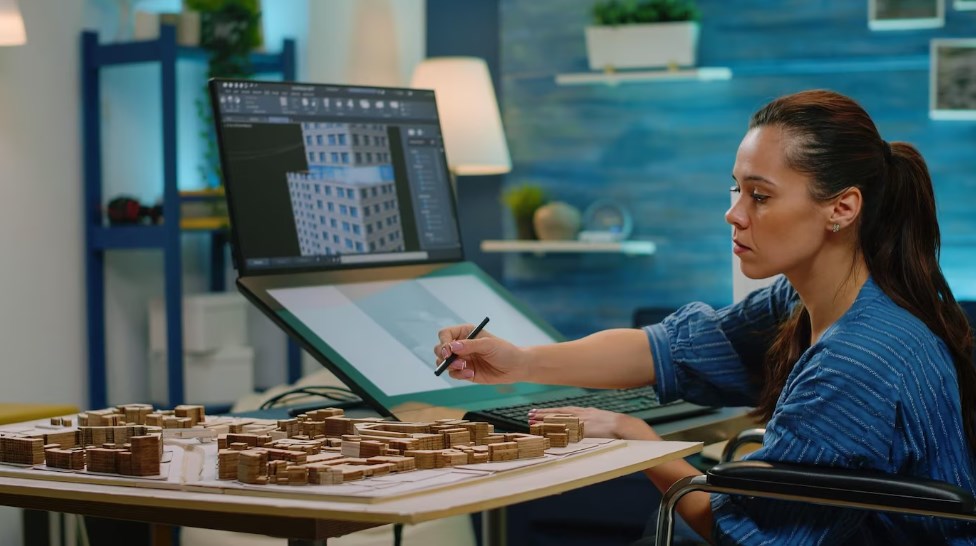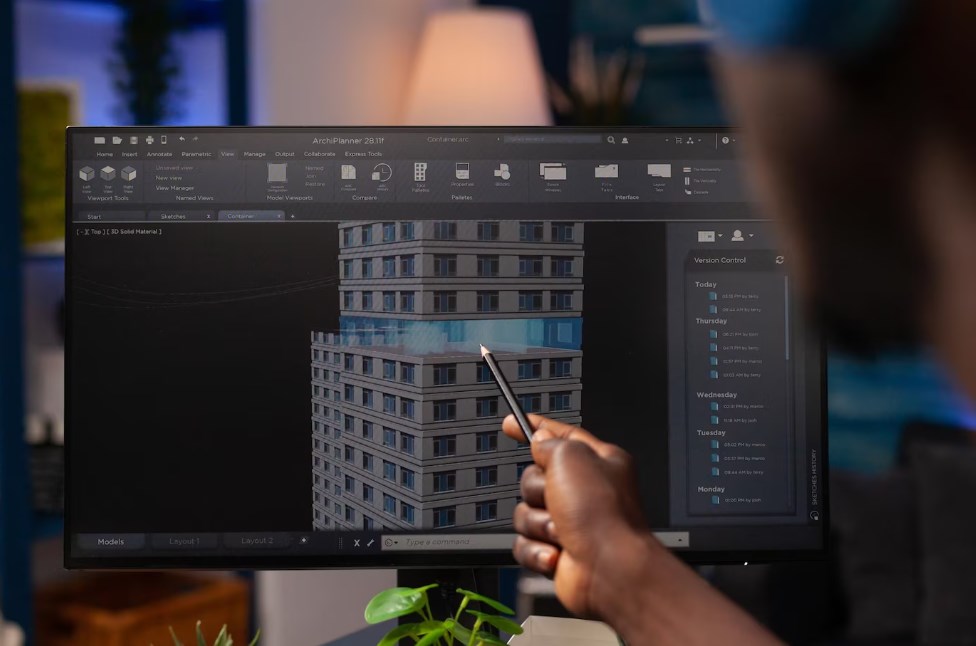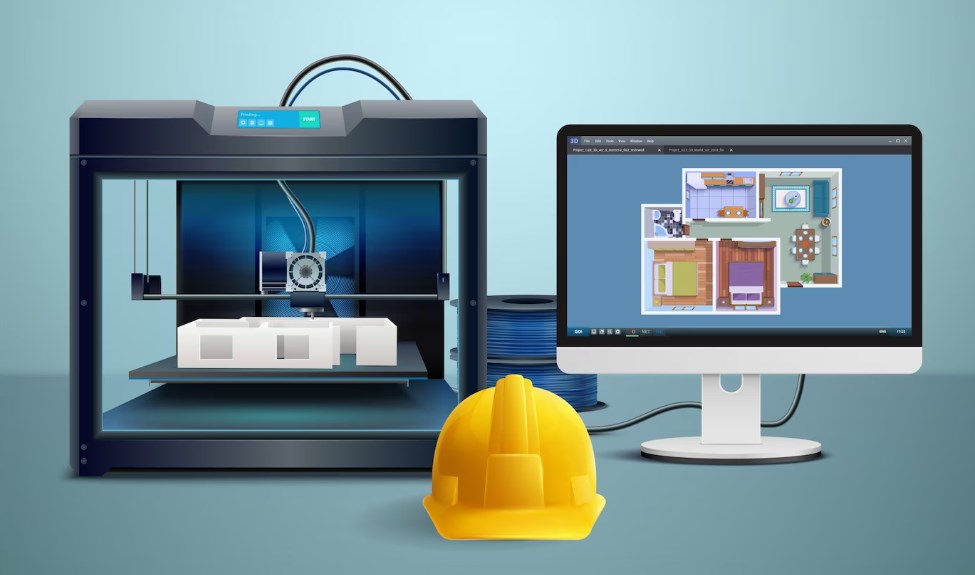The art of Civil Engineering is experiencing a groundbreaking shift, thanks to the evolution of 3D Modelling (3DM). This technology, capable of crafting precise digital replicas of physical structures, is reshaping how we visualize, analyze, and execute engineering projects.
Dive into this riveting discourse to unravel the various facets of 3DM and its multifaceted benefits for civil engineering.
Exploring the Perks of 3D Modelling for Infrastructure Development
The advent of 3DM has ushered in a new era in infrastructure development, marking a significant departure from traditional methods. This innovation allows for precise digital replication of buildings and landscapes, contributing to tremendous advancements in design drafting, project visualization, and structural analysis.
This comprehensive discussion will explore the manifold advantages of 3DM within the sphere of infrastructure development.
Deciphering 3D Modelling
Before we unlock its myriad advantages, let’s demystify what 3D modelling truly encompasses. At its core, 3DM is the craft of developing a three-dimensional digital replica of any object or environment through specialized software. This involves recording the form, texture, and spatial relationships between different elements, thus enabling engineers to develop intricate virtual prototypes that mirror their real-world counterparts.
The Essence of 3D Modelling
In the realm of infrastructure development, 3D modelling involves the usage of advanced software applications to develop accurate digital portrayals of architectural plans, infrastructure layouts, and geographical data. This gives engineers the ability to visualize the coherence of different components and foresee potential conflicts before the initiation of construction.

Tracing the Evolution of 3D Modelling in Infrastructure Development
3DM has experienced a significant evolutionary journey within infrastructure development. Initially, conventional 2D drafts struggled to fully communicate intricate designs, thus limiting engineers in evaluating the feasibility and practicality of their plans. But with the emergence of robust Computer-Aided Design (CAD) software and breakthroughs in computational capabilities, engineers can now develop elaborate 3D prototypes that offer a holistic understanding of projects:
- The advent of 3D modelling has empowered engineers to emulate real-world circumstances and assess the resilience of their designs. By integrating precise physical attributes like material strength and weight distribution into the virtual prototypes, engineers can evaluate how varying forces, such as wind or earthquakes, might impact the structure. This enables more accurate computations and alterations, leading to more secure and efficient architectural plans;
- Moreover, 3DM has fundamentally transformed the collaborative process in infrastructure projects. Previously, engineers relied heavily on 2D drafts and spoken explanations to share their concepts, often leading to miscommunications and misinterpretations that delayed construction and introduced errors. However, with 3D prototypes, engineers can present their plans in an engaging, visual format, enabling all project stakeholders to fully comprehend the planned vision. This not only enhances communication but also facilitates superior decision-making and problem resolution throughout the project duration;
- One of the notable advantages of 3DM is its positive impact on cost and time efficiency. By creating virtual replicas, engineers can detect design inconsistencies and implement necessary alterations early on, thereby avoiding costly and time-intensive adjustments during the construction phase. Additionally, visualizing the entire project in 3D aids in optimizing material allocation and construction sequencing, leading to cost reductions and streamlined operational processes;
- With continual technological advancements, 3DM is poised to assume an even more vital role in infrastructure development. The integration of Virtual Reality (VR) and Augmented Reality (AR) will offer engineers the ability to fully immerse themselves within their designs, providing a truly interactive and lifelike experience. This will further improve the design process and empower engineers to make more informed decisions.
3D modelling is redefining how engineers approach design and construction projects. It is a powerful tool for visualizing and analyzing complex structures, enhancing collaboration, and optimizing cost and time efficiency. As this technology continues to evolve, the scope for 3D modelling within infrastructure development is limitless, holding the promise of even more extraordinary advancements in the future.
Incorporating 3D Modelling in Infrastructure Development
Having grasped what 3D modelling entails, let’s investigate its distinct role within infrastructure development projects.
Infrastructure development is a comprehensive field that encompasses the blueprinting, execution, and upkeep of infrastructure projects, such as edifices, bridges, highways, and dams. In recent times, 3DM has surfaced as an instrumental tool in the sector, revolutionizing the way projects are conceptualized and implemented.
Design and Representation
3D modelling’s fundamental application within infrastructure development is for design drafting and project representation. By crafting precise digital replicas of structures, engineers can probe various design alternatives, test with an array of materials, and anticipate the end-result of the project. This encourages more optimized designs, improved structural resilience, and enhanced communication of design concepts to clients and stakeholders.
Envision an engineer assigned to design a novel bridge. With 3DM, the engineer can construct a virtual prototype of the bridge, inclusive of correct dimensions and materials. They can then manipulate the prototype to test different design iterations, like modifying the bridge’s span length or repositioning support pillars. Visualizing these design alterations in 3D allows the engineer to evaluate their impact on the bridge’s structural robustness and aesthetics, enabling informed decision-making.
Structural Examination
Beyond design and representation, 3D modelling is pivotal for conducting structural examinations. Engineers can simulate various loads, test the resilience of their designs, and pinpoint potential frailties or areas for enhancement. With precise and detailed 3D prototypes, engineers can optimize designs to withstand real-world conditions, reducing the likelihood of structural failures and ensuring the safety of the final construction.
Consider an engineer working on a skyscraper’s construction. By creating a 3D prototype of the building, the engineer can simulate the effects of wind, earthquakes, and other forces on the structure. This enables them to identify potential weak spots and implement necessary design alterations to ensure the building’s stability. Additionally, 3DM enables engineers to analyze the behavior of complex structural systems, like trusses or arches, with higher accuracy and efficiency.

Infrastructure Layout Planning
3D modelling plays a crucial role in supporting infrastructure layout planning within infrastructure development. By constructing 3D prototypes of existing landscapes, engineers can evaluate how new structures will interact with their environment. This allows for a more precise evaluation of factors like natural drainage patterns, traffic movement, and environmental impact. By considering these elements during the planning phase, engineers can create more sustainable and efficient infrastructure layouts.
Assume an engineer is involved in planning a new freeway. By using 3D modelling, the engineer can create a virtual depiction of the existing terrain, complete with precise elevation data and geographical characteristics. This allows them to analyze how the freeway’s alignment will affect the surrounding environment, including potential impacts on water bodies, wildlife habitats, and residential areas. Visualizing these factors in 3D allows engineers to make informed decisions about the freeway’s design, minimizing its environmental impact and maximizing its efficiency.
3DM has become an essential tool within infrastructure development. From design and representation to structural examination and infrastructure layout planning, 3D prototypes provide engineers the capability to optimize designs, ensure structural resilience, and create sustainable infrastructure solutions. As technology continues to progress, 3DM is expected to play an even greater role in shaping the future of infrastructure development.
Pivotal Advantages of 3D Modelling in Infrastructure Development
Having delved into the role of 3D modelling within infrastructure development, let’s examine the key advantages this technology offers.
3D modelling has transformed the sphere of infrastructure development, offering several benefits that augment the precision, efficiency, collaboration, and cost-effectiveness of projects. By capitalizing on this advanced technology, engineers can surmount traditional limitations and unlock new prospects for design, construction, and project management.
Here are some key benefits:
- Increased Design Accuracy: Through 3D models, engineers can generate detailed and highly accurate representations of structures, which aids in crafting more precise and practical designs.
- Improved Visualization: 3DM allows engineers to visualize the finished project, test various design alternatives, and predict the potential impact of design changes;
- Enhanced Structural Analysis: Engineers can use 3D models to conduct detailed structural analyses, identify weak points, and make necessary design modifications, ensuring the structure’s safety and durability;
- Superior Infrastructure Planning: 3D models can help engineers understand how a new structure will interact with its surroundings, allowing for the creation of more sustainable and efficient infrastructure layouts;
- Effective Communication: 3D models can help engineers communicate complex design concepts more effectively to stakeholders, minimizing misunderstandings and facilitating collaboration;
- Cost and Time Efficiency: By identifying potential design flaws early in the project, engineers can reduce the need for expensive rework, leading to significant time and cost savings.
As technology continues to evolve, the advantages of using 3D modelling in infrastructure development will only continue to multiply, paving the way for further advancements in the field.
Augmented Accuracy and Efficacy
3DM significantly boosts the precision and efficiency of infrastructure development projects. Key benefits include:
- Error Elimination: By working with accurate digital models, engineers can eliminate errors and inconsistencies that could arise from traditional 2D blueprints;
- Comprehensive Understanding: The three-dimensional representation provides a comprehensive understanding of the project, enabling the identification of potential design flaws before construction begins;
- Efficiency Improvement: Incorporating precise data about the site, materials, and environmental factors allows for optimized design and enhanced construction efficiency;
- Boosted Collaboration and Communication.
3D modelling facilitates improved collaboration and communication among stakeholders.
Notable advantages include:
- Improved Communication: Detailed digital models effectively convey the design intent and provide a shared visual reference, reducing misunderstandings;
- Collaborative Decision Making: Stakeholders, including architects, structural engineers, and contractors, can identify potential conflicts and make informed decisions collaboratively;
- Enhanced Project Outcomes: The collaborative approach promotes teamwork, leading to superior project outcomes and increased client satisfaction.
Cost and Time Conservation
3DM leads to significant cost and time savings. This is achieved through:
- Problem Anticipation: Identifying design flaws before construction begins minimizes the risk of on-site errors and reduces the need for costly rework;
- Efficient Project Execution: Streamlining the design process and minimizing errors result in reduced construction times and associated costs;
- Resource Optimization: Accurate quantity take-offs from digital models enable optimal material usage and waste minimization, leading to cost savings.
Real-world Examples: 3D Modelling in Action
Case studies of successful 3DM applications include:
- Bridge Construction: 3D modelling allows for the creation of accurate digital models of bridge structures and simulation of different load conditions. This enables the optimization of designs for safer and more efficient structures;
- Urban Expansion Initiatives: In urban planning, 3D modelling assists in optimizing space utilization and infrastructure planning, leading to more efficient and sustainable urban development;
- Water Management Systems: For drainage networks and flood prevention structures, 3DM helps in optimizing layouts, evaluating flood risks, and designing effective flood prevention measures, ensuring the safety and resilience of water management systems.
| Text Section | Key Takeaways |
|---|---|
| Exploring the Perks of 3DM for Infrastructure Development | 3DM is a powerful tool in civil engineering that allows the creation of realistic, detailed, and scalable models of infrastructure projects. |
| Augmented Accuracy and Efficacy | 3DM increases the accuracy and efficiency of projects. It allows for the identification of design flaws before construction, resulting in less rework, reduced cost, and increased project speed. |
| Boosted Collaboration and Communication | 3DM enhances communication and collaboration among stakeholders. It provides a shared visual reference, facilitating effective decision making and promoting teamwork. |
| Cost and Time Conservation | 3DM allows for significant cost and time savings. It helps identify problems before they arise on-site and streamlines the design process, resulting in reduced construction times and costs. |
| Real-world Examples: 3DM in Action | 3DM has been successfully applied in various fields such as bridge construction, urban expansion initiatives, and water management systems. These cases illustrate its capability to optimize designs, enhance planning, and improve safety measures. |
Conclusion
3DM has emerged as an indispensable tool in the field of civil engineering. Its ability to create accurate digital representations, improve design efficiency, and facilitate collaboration has revolutionized the industry.
With its numerous benefits in terms of accuracy, efficiency, and cost savings, it is safe to say that 3DM will continue to play a pivotal role in shaping the future of civil engineering projects.
